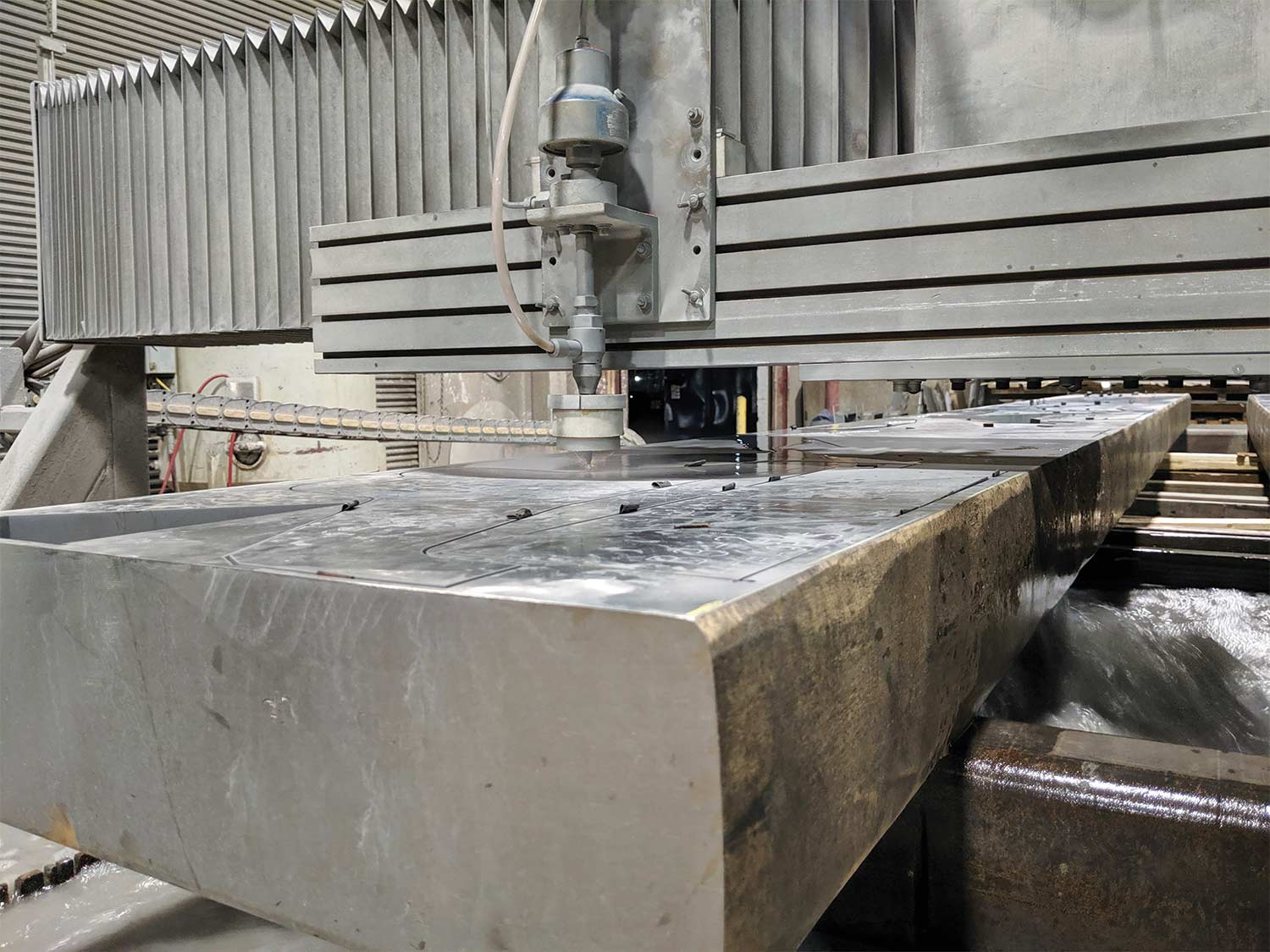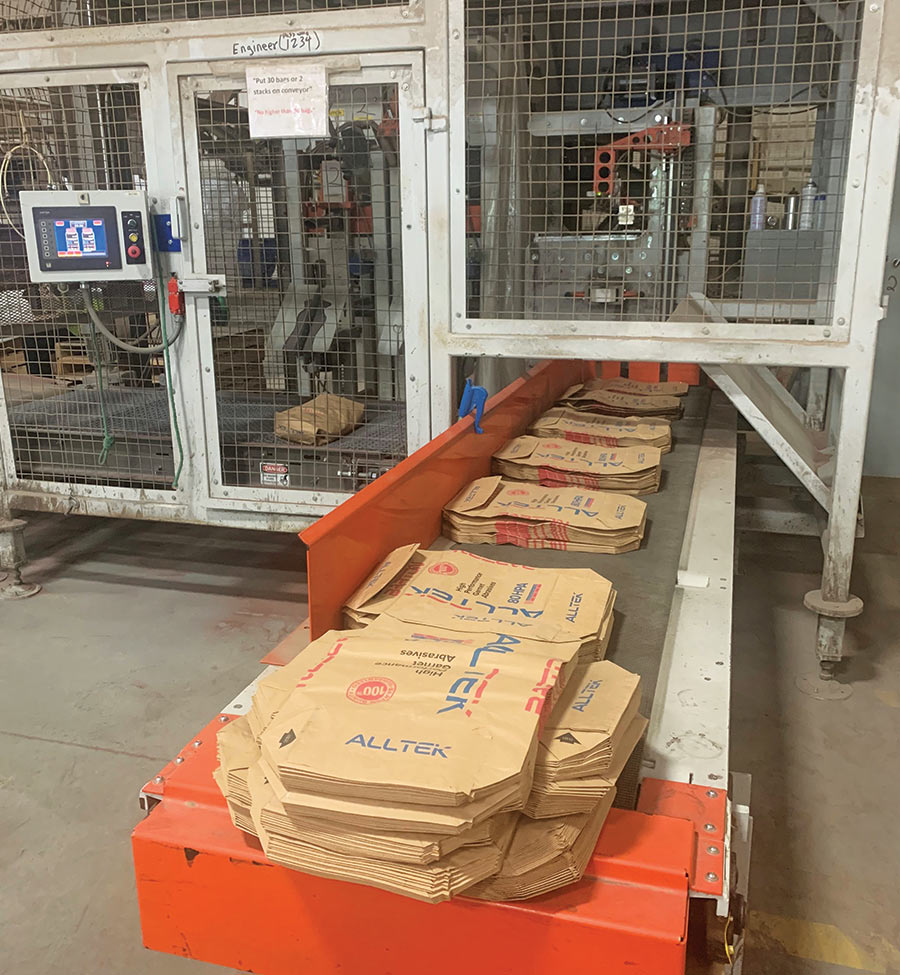
arnets, January’s birthstone, can be traced back to the Bronze Age, when they were used in burial jewelry and carved signet rings to indicate royalty. Egyptians coveted the gemstone, referring to it as the symbol of life or “heart’s blood.” In 1878, mineralogist Henry Hudson Barton found garnet on Gore Mountain in the Adirondack Mountains. He established Barton Mines Corp. and became the first to successfully process garnet ore into an industrial abrasive for sandpaper manufacturers.
More than 140 years later, garnet remains the heart’s blood of Barton International. Seven generations of the Barton family have helped chart the company’s path through multiple product life cycles. The silicate mineral has been used in applications ranging from glass grinding for eyeglass lenses, picture windows, and gun sights to screens and funnels for cathode ray televisions. In 1982, Barton moved its mining operations to nearby Ruby Mountain. As demand for garnet abrasive sandpaper waned, Barton positioned itself to supply its garnet product—Adirondack HPX—to the first waterjet installed in the U.S. in 1984.
“Barton has always been particularly good at identifying a business opportunity and seizing it,” says President Randy Rapple. “The waterjet market is a perfect example of that. We sat down with the engineering group from Ingersoll-Rand [now KMT Waterjet Systems Inc.] to talk about the technology, how it worked and what the abrasive needed to do. We developed the Adirondack HPX for that market.”

In addition to Adirondack HPX, Barton produces garnet abrasives for surface preparation, grinding, polishing and specialty applications for a diverse customer base from aerospace and electronics to shipyards and defense. In the waterjet market, Barton has expanded its offering to include spare parts, accessories, nozzles, mixing tubes, lubricants, pump parts and cutting heads.
 Quality has always been a priority because that is what brings the greatest value to the consumer.
Quality has always been a priority because that is what brings the greatest value to the consumer. 
Barton garnet—designated the New York State Gemstone in 1969—continues to set the standard for industrial abrasives. The company’s Ruby Mine produces the highest quality garnet crystals in the world. “It’s a fantastic deposit,” says Rapple, who is also a geologist. “It remains one of the largest garnet deposits in the world but the mineral itself is superior. It’s harder, sharper and stays sharp during use.”
“We also do a better job of processing our minerals,” he continues. “Barton has invested a considerable amount of time and effort into the engineering side of processing its ore. Quality has always been a priority because that is what brings the greatest value to the consumer. Less than 1 percent of the orders we ship in a given year have a quality issue. And it may not be with the product. If a truck arrives late, we count that as a quality issue because it affected the customer. Actual product quality issues are less than one-tenth of 1 percent.”
Over the years, Barton has also developed an import network that includes sourcing garnet from Australia, China, India and South Africa. “These decisions were made very strategically, because a good supply chain manager never relies on just one source,” Rapple says.
Customer service is another Barton hallmark. The company cultivates long-term relationships by assigning each customer with a team comprising a regional sales manager, an inside sales representative and a customer service representative. “We value our customer relationships at an extraordinary level and believe that face-to-face interaction makes a big difference,” he says.

As a customer-centric company and an importer and exporter of garnet abrasives, the supply chain disruptions created by COVID-19 have proved challenging for Barton.
“COVID-19 impacted Barton on several levels,” says Rapple. “Travel ceased, making it more difficult to maintain that personal relationship with our clients. Our office staff had to work remotely. Because our mining operations were designated an essential business, we had to implement complex layers of safety measures to protect our personnel. But we have never had a single incident of COVID crop up as a result of our work environment.”
Barton is also grappling with rising freight rates influenced by pandemic-related delays and closures, non-stop demand for ocean freight and lack of capacity.
“We export a fair amount of material to Europe,” says Rapple. “But ocean freight has been turned upside down. About half the time you can’t get the service you want and if you do, the cost has tripled or quadrupled. Whether it’s steel or garnet, everyone is dealing with the same challenges.”
The nimble-footed company has implemented several strategies to balance customer needs with supply chain disruptions. It uses close communication to keep its finger on the pulse of its customers. “If a company has an immediate need, we can move them to the front of the queue, send them a partial shipment or ship from an alternate location,” Rapple says.







As a customer-centric company and an importer and exporter of garnet abrasives, the supply chain disruptions created by COVID-19 have proved challenging for Barton.
“COVID-19 impacted Barton on several levels,” says Rapple. “Travel ceased, making it more difficult to maintain that personal relationship with our clients. Our office staff had to work remotely. Because our mining operations were designated an essential business, we had to implement complex layers of safety measures to protect our personnel. But we have never had a single incident of COVID crop up as a result of our work environment.”
Barton is also grappling with rising freight rates influenced by pandemic-related delays and closures, non-stop demand for ocean freight and lack of capacity.
“We export a fair amount of material to Europe,” says Rapple. “But ocean freight has been turned upside down. About half the time you can’t get the service you want and if you do, the cost has tripled or quadrupled. Whether it’s steel or garnet, everyone is dealing with the same challenges.”
The nimble-footed company has implemented several strategies to balance customer needs with supply chain disruptions. It uses close communication to keep its finger on the pulse of its customers. “If a company has an immediate need, we can move them to the front of the queue, send them a partial shipment or ship from an alternate location,” Rapple says.
Internally, Barton has implemented weekly meetings between operations, logistics, IT and other critical departments to look at inbound shipments, production planning and other data to continue to identify ways it can improve service. “It’s a level of attention, that in normal times, you don’t typically provide,” says Rapple, “but it’s critical that our customers be able to run their businesses uninterrupted. They count on us for that.”
At the height of the pandemic, Barton made another bold move. “We were able to acquire a small competitor that increased our market share, enhanced our relationships with machine manufacturers and provided the opportunity for us to grow our business in Europe,” Rapple says. “It was a good move for both businesses.”
While Barton’s Adirondack mine continues to produce the hardest garnet in the world at 2,400 ft. above sea level, Rapple says the crystals aren’t the company’s most important resource. “Our people are our number one asset,” he continues. “They are a big part of our longevity. The wisdom of the Barton family to identify and attract the best people has paid off in terms of in dividends. You can’t argue with steady growth and satisfied customers.”

